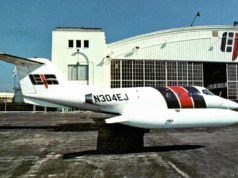At least half a dozen emails with that subject line hit my inbox daily. While business jet sales activity has increased in recent months, it’s only because the “offers made” have been getting lower. Thanks to several years of a worldwide down economy, there are more current owners willing to part with their very clean, well-maintained aircraft than there are interested buyers. And that makes it tougher for aircraft manufacturers to sell new ones with virtually the same flight capabilities.
It doesn’t help that this is a U.S. presidential election year. I’ve watched this cycle now for several decades: every four years, company executives and high-net-worth individuals sit on their wallets, waiting to see who wins before making significant capital investments, whether in plants and equipment – or business turbine aircraft.
Unfortunately, these aircraft are too well-built, too safe, and too reliable. And until recently, too good an investment. After all, business jets are built to the same standards defined in Federal Aviation Regulation (FAR) Part 121 as are commercial airliners. Properly operated and maintained, their useful life can easily run forty or more years. And they do.
In 1973, business jet manufacturers delivered fewer than 300 total aircraft worldwide. In 2015, they delivered well more than twice that many, 689 aircraft, and have delivered almost 14,000 new business jets in the last 20 years. The vast majority of all those aircraft are still flying today – a testament both to the quality of manufacture, and to your commitment to safe operations.
But in the current world economy, we just don’t need all of them. Seth Seifman of JP Morgan Securities summed it up quite nicely in his September 2016 Business Jet Monthly report:
The most consistent theme is that there are still too many aircraft for sale, resulting in residual values that continue to decline and depreciation curves that get steeper.
Residual value today has little to do with an aircraft’s original purchase price, or the current value carried on the owner’s books; it’s completely dependent on what the market will pay. And an email with “Make Offer” or “Must Sell” in the subject line is an open invitation for that market to pay less, and less, and less…
This means that if you’re looking to trade in because you want to upgrade, or because your travel requirements have changed, you’ll likely be confronted with reverse “sticker shock” as you look to sell.
But at some point, you’ll have to make a move. Heavy maintenance on aging aircraft, combined with new regulations requiring expensive retrofits, may make a newer aircraft a better buy – and finally put those older aircraft out to pasture. BAA
Publisher of Business Aviation Advisor, has nearly 50 years in business aviation including executive positions at aircraft management/charter and ground services companies. He is a past director of the NATA and Corporate Angel Network.





